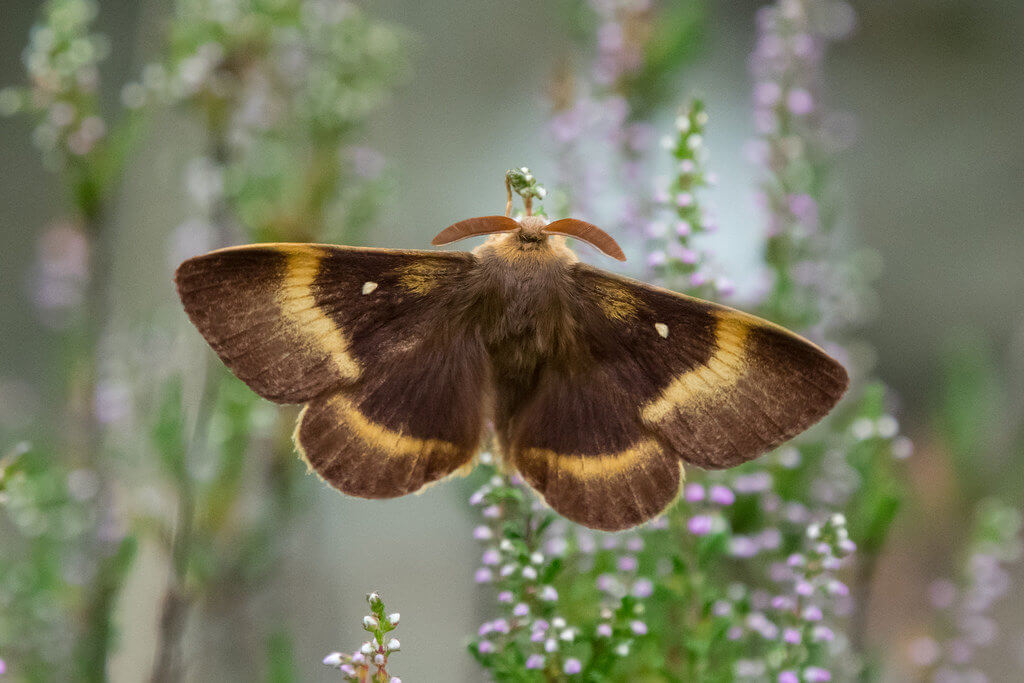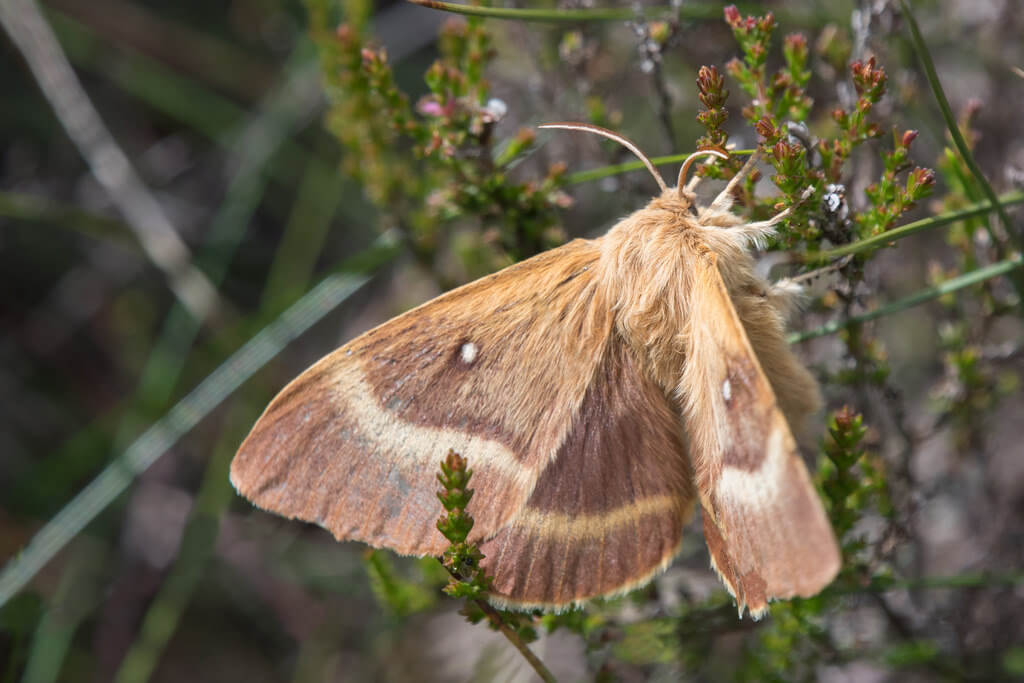
Tim writes: Northern Eggar (Lasciocampa quercus callunae) is a large day-flying moth that is currently considered to be the northern form of the Oak Eggar (L. quercus). Northern Eggar is darker with distinct wing marking differences (eg paler shoulders and an S-shaped cross band), it has a two year life cycle (not one year like Oak Eggar) and it appears on the wing about a month earlier than Oak Eggar. But the situation does seem rather complicated with some lowland and southern populations appearing like Northern Eggars. In the Peak District they appear in late May flying non-stop over the moors, and falling prey to both Hobbies and Merlins. This is a male identified by his dark brown colouration and his feathered antennae which he uses to locate females that release pheromones.
I was out for a walk on the Peak District moors in late July and saw hundreds, but every single one was flying unphotographably fast. Then after several hours I spotted one flapping in the heather. Although it was perched it still flapped its wings rapidly and incessantly so I had to use a fast shutter speed to freeze them (1/2000) and this is the result.
The caterpillars are huge (c8cm long) and hairy, and the generic name Lasciocampa comes from the Greek meaning hairy caterpillar. The names quercus and callunae translate as Oak and Heather, the former one of many foodplants of Oak Eggar, whereas Northern Eggar usually only feeds on Heather or Bilberry. The name Eggar incidentally refers to the large egg-shaped silk cocoon which houses the pupa. The reason why males are so difficult to photograph is because they don’t feed on flowers like normal moths and butterflies. In fact, they don’t feed at all, instead using the fat reserves built up as a caterpillar. So they spend their entire life patrolling for females and being extremely difficult to photograph. Only really settling to mate, or I suppose to rest in cold weather. The books say that the females are active at night (coming to light traps, unlike males) but it seems odd that males would not be active nocturnally too, even if they don’t come to light.
Taken with Nikon D500 with Nikkor 300mm f4 lens plus 1.4x converter at f7.1 1/2000 second ISO 5600
Here is the paler female which lacks the feathered antennae. They sit around in the heather waiting for males to arrive so are much easier to photograph.

Taken with Nikon D500 with Nikkor 300mm f4 lens plus 1.4x converter at f5.6 1/1600 second ISO 400
[registration_form]
Beautiful things. I have many happy memories of seeing them on the Peak District Moors, including them falling prey to Merlins, their wings fluttering to the ground as they were aerially dismembered! Their cocoons are works of art in themselves.
Thanks for the reminder!